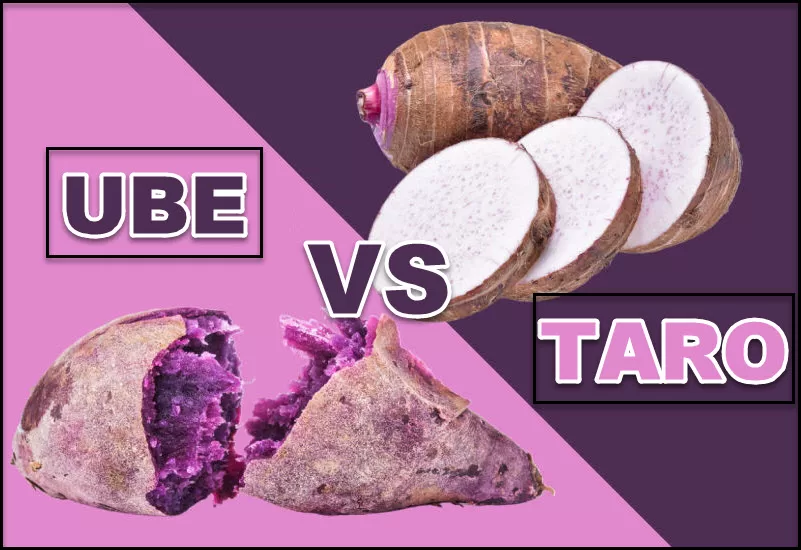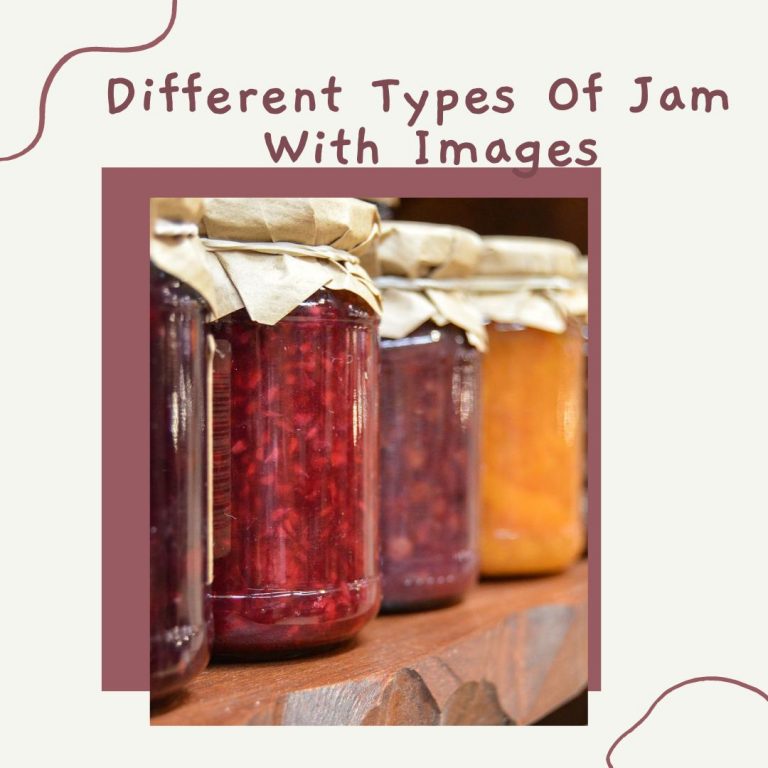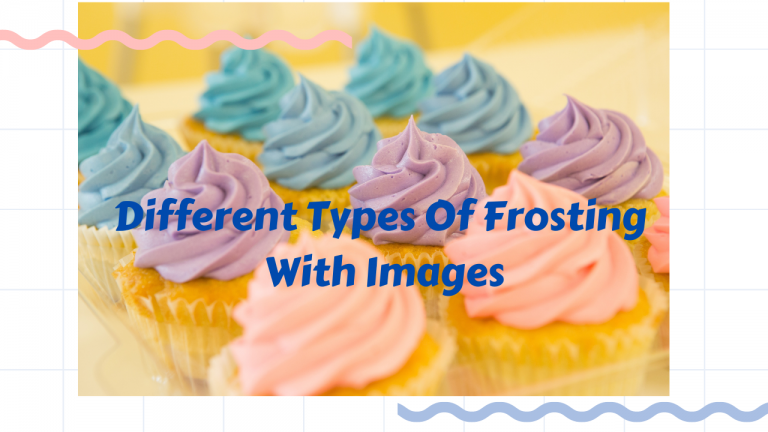Difference between Ube and Taro

Can you tell the difference between a cake, ice cream or boba drink made of ube vs taro? Oftentimes, people confuse them because of their striking similarities. Ube and taro cakes and desserts are usually sweet and purple in color. It’s hard to tell which ingredient they used in cooking.
Ube and taro are healthy vegetables known for their wide culinary applications. While they share many similarities, they also have noticeable differences.
It’s important to spot the difference between the two because in preparing certain foods or dishes that involve the use of one of these vegetables, you can’t use them interchangeably.
In this article, we’ll find out the features and characteristics of each vegetable that set them apart.
Origin
Popularly known as the purple yam, the ube plant comes from several countries in Southeast Asia, particularly the Philippines and parts of New Guinea. On the other hand, while taro is also widely available in Southeast Asia, specifically in India and the Philippines, it is also cultivated in various parts of the world, including Hawaii, Papua New Guinea and Nigeria.
Appearance
Based on the outer appearance of purple yams, you may easily confuse this vegetable for purple sweet potatoes. The skin of raw yam and sweet purple potato are both purple in color and smooth to the touch.
When you cut open the ube root, you’ll see a vibrant and more intense purple color (royal purple). The color of this purple vegetable even intensifies once processed or cooked into various desserts. Food enthusiasts love incorporating ube into various dishes because it makes the color of the food more vibrant and irresistible.
On the other hand, the skin of taro roots is brown in color, asymmetrical and rough to touch. If you cut them open, you will see a light pink or white flesh inside. Boiling them can turn the flesh into purple color.
As this root crop generally has white flesh, when you see a deep purple taro dessert or boba tea, most likely it has some food coloring added to it.
Texture
Yams are more like sweet potatoes in terms of texture. A cooked yam is soft, moist, slightly sticky and has a delicate texture with each bite. And just like sweet potatoes, yams easily melt in your mouth when you eat them.
Unlike ube which is moist, taro is soft and dry with a starchy feel. When you eat it, it will remind you of sweet potato because of its soft and grainy texture.
Flavor
Ube has a sweet and rich taste like vanilla. Its sweetness is just mellow and not overpowering. However, the origin and the size of the purple yam affect its taste. Generally, larger varieties of yams are sweeter than the smaller ones.
Taro on the other hand is just slightly sweet, with a nutty and earthy flavor. If you add it to a dish, it soaks up flavor like a sponge so they are great for stews.
Culinary Application
Ube ice cream is popular not just in Asian countries but also in the US and in many countries across the globe. But apart from being used as an ice cream flavor, ube has many other culinary applications particularly in preparing healthy desserts.
You might have heard of the popular traditional Filipino purple yam jam called “ube halaya.” Ube halaya is a delicacy made of mashed and cooked ube, coconut milk and butter. This Filipino delicacy is cheesy and creamy and can be eaten as is or you can also mix it with other desserts.
If you search the internet for ube or purple yam recipe, you’ll also see muffins, macaroons, cookies and cakes that use ube as the key ingredient.
As ube is sweeter than taro, they are rarely used in cooking savory food, but you definitely can’t resist tasting ube desserts.
In comparison, as taro has a starchy and milder taste, you can easily use it in cooking sweet and savory food. You can also fry, boil, bake, steam or roast it. In Hawaiian cuisine, taro is used to make a traditional staple dish called poi. It is made from boiled and mashed taro and can be eaten as it is.
In the Philippines, taro is an important part of Filipino cuisine. It is used in cooking healthy savory recipes such as pork stew and “sinigang”. Moreover, a sweet milk-based dessert called taro pastillas is also a local favorite.
In the US, there’s increasing popularity of boba tea, a sweet and healthy beverage that’s made with taro, brown sugar, milk and tapioca or boba pearls. The availability of taro boba milk tea powder or mix makes it more convenient to prepare boba tea at home.
Health Benefits
Consuming food or drinks with ube or taro as the key ingredient offers numerous health benefits.
The purple yam or ube is a great source of dietary fiber and essential minerals including potassium, calcium and iron. Ube is also high in protein, vitamin A and vitamin C. These vitamin and mineral components of ube help boost your body’s overall health.
Moreover, ube contains antioxidants such as anthocyanins which protect the body from free radicals. Serious health conditions like heart disease, cancer and diabetes are a result of the body’s inability to fight the free radicals.
Studies also show that ube contains flavonoids that help reduce your risk of type 2 diabetes. On top of that, ube also contains a type of carb that’s resistant to digestion and such carb encourages the growth of Bifidobacteria, a bacteria that is beneficial to gut health.
If you have to compare ube vs taro in terms of health benefits, the latter won’t be left behind. In fact, taro has a strong nutritional profile as it contains dietary fiber, magnesium, manganese, potassium, vitamin C and Vitamin E. It also contains a similar digestion-resistant carb present in ube. The nutritional value of taro makes it useful for maintaining gut health, reducing your risk of heart disease, and helping you manage your sugar levels.
FAQ
Q: Is taro milk tea made of ube?
No, commercial milk teas are usually made using taro milk powder.
Q: Is taro the same as a purple sweet potato?
No, they are completely different plants.
Q: Is purple yam and ube the same?
Yes, they are the same. Ube is popularly known as purple yam.
Takeaways
Both taro and ube have come a long way from being humble root crops to becoming popular ingredients in ice cream, drinks boba tea and various desserts.
We have known of ube desserts like ube ice cream and ube halaya as well as taro dishes and desserts such as poi and boba tea.
If you are into cooking and baking, it’s a good idea to consider using ube or taro in your recipe. You can start with simple recipes then explore more options as you get acquainted with the taste.





